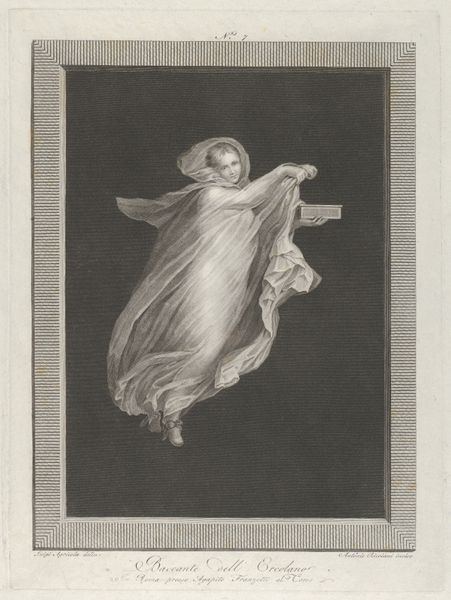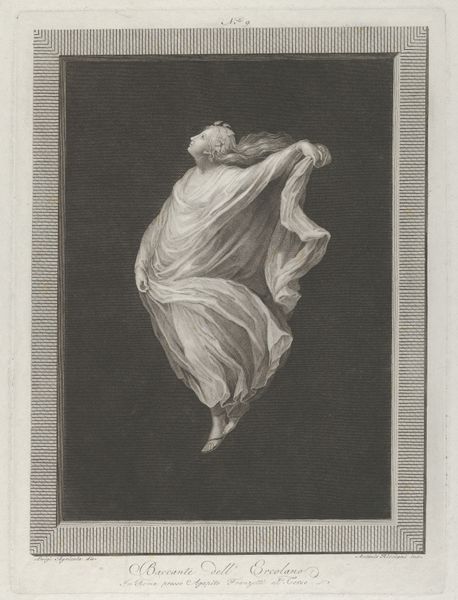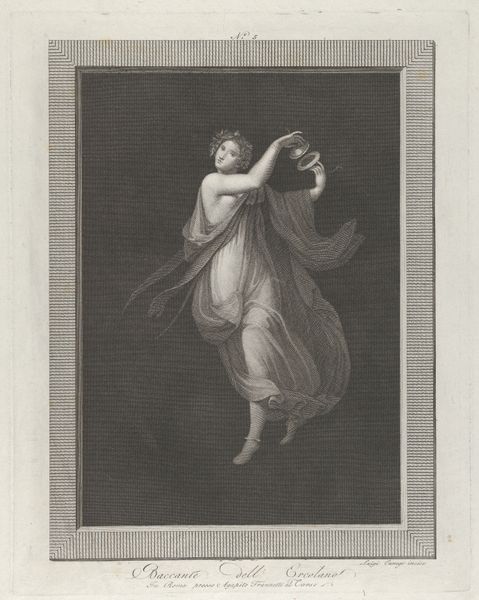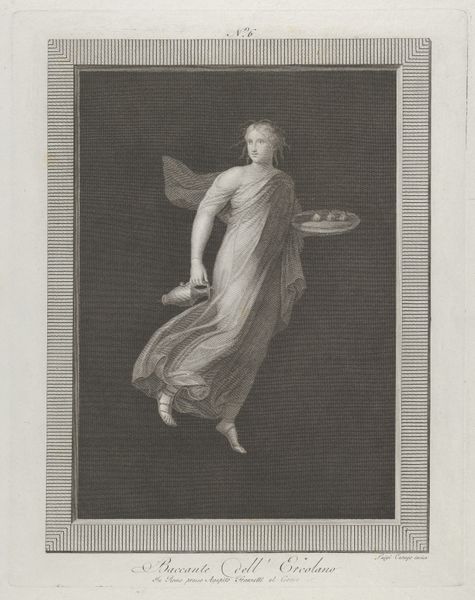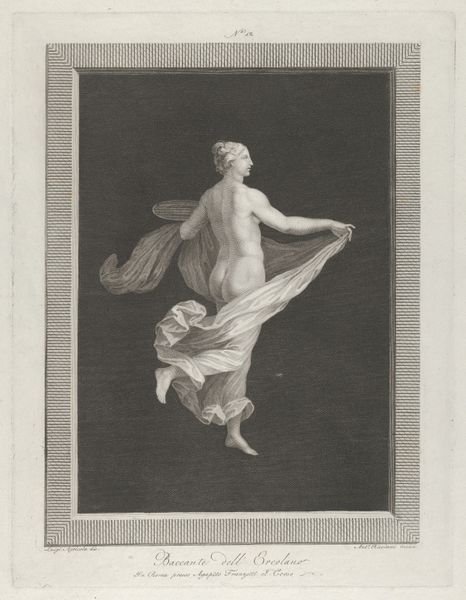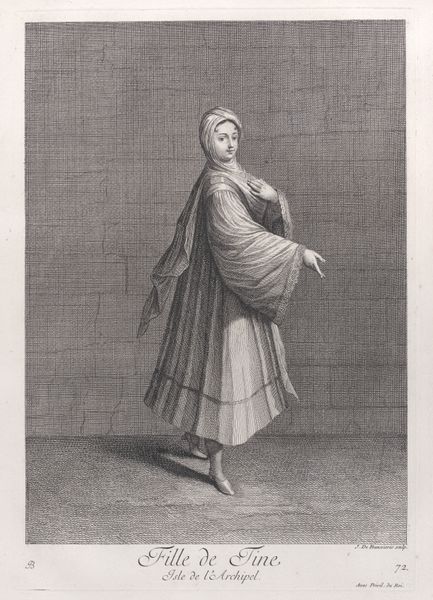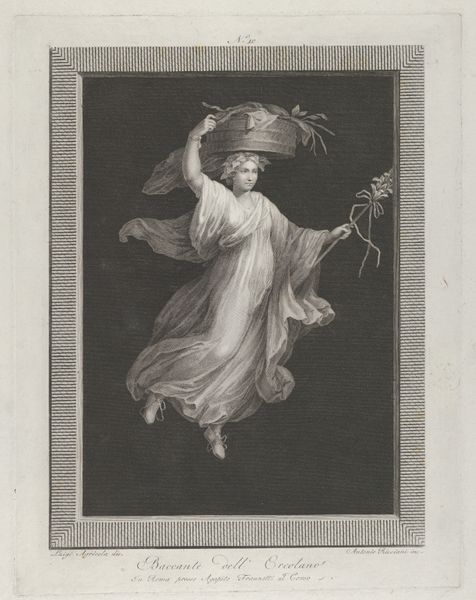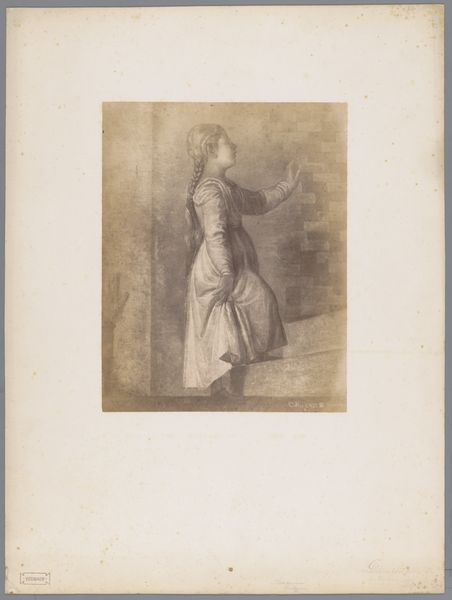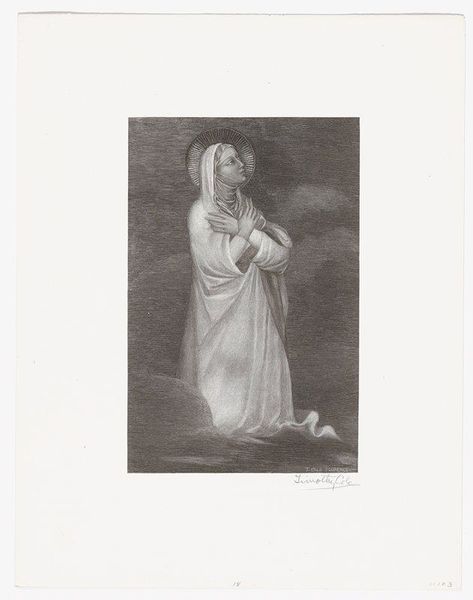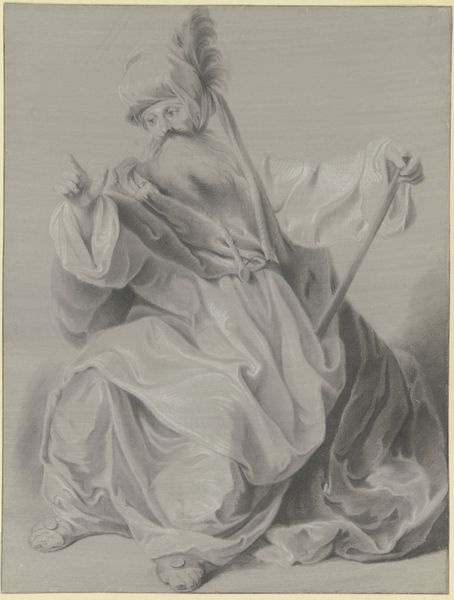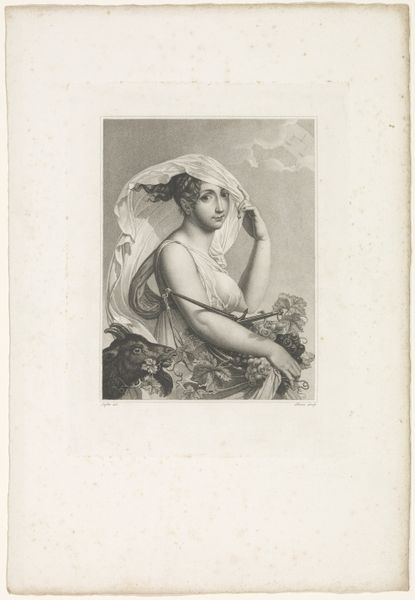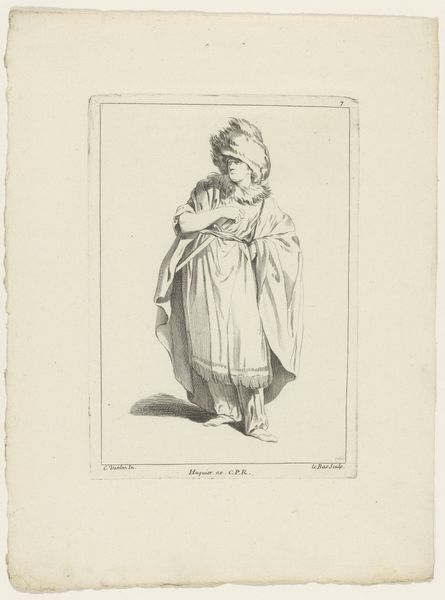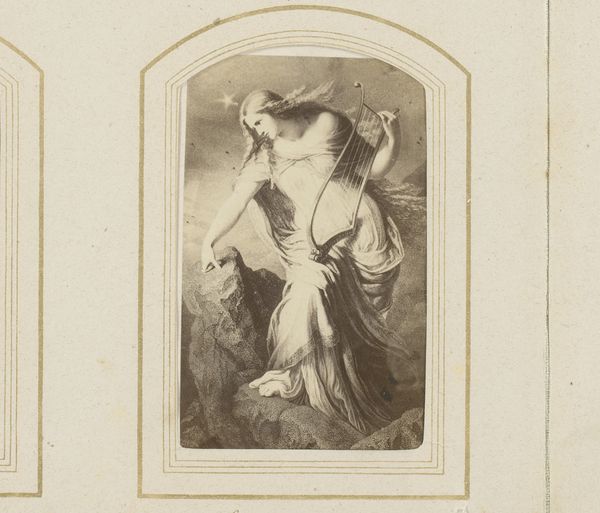
A bacchante wearing a flowing drapery, looking down, right arm bent and left arm outstretched, set against a black background inside a rectangular frame 1790 - 1800
0:00
0:00
drawing, print, engraving
#
drawing
#
neoclacissism
# print
#
old engraving style
#
figuration
#
history-painting
#
academic-art
#
nude
#
engraving
Dimensions: Sheet: 16 5/16 × 12 3/8 in. (41.4 × 31.5 cm) Plate: 13 × 9 13/16 in. (33 × 25 cm)
Copyright: Public Domain
Antonio Ricciani created this engraving of a bacchante in Italy around the turn of the 19th century. The figure is taken from ancient Roman frescoes excavated from the ruins of Herculaneum. During this era, there was a burgeoning interest in antiquity which fueled artistic and intellectual movements. Here, Ricciani references the imagery of a bacchante, a female follower of Bacchus, the Roman god of wine, ecstasy, and theatre. The bacchantes were associated with wild abandon and ritual madness. The rediscovery of Pompeii and Herculaneum spurred on the Neo-Classical style, which embraced the forms of the ancient world. Art academies played a crucial role in disseminating these ideals, influencing artists to study classical sculpture and painting. Ricciani’s work is a product of its time, reflecting the values and artistic sensibilities of the Neoclassical movement. To fully understand this, scholars can delve into the archives of art academies, study archaeological reports, and analyze period literature. By doing so, we gain insight into the complex interplay between art, history, and society.
Comments
No comments
Be the first to comment and join the conversation on the ultimate creative platform.
